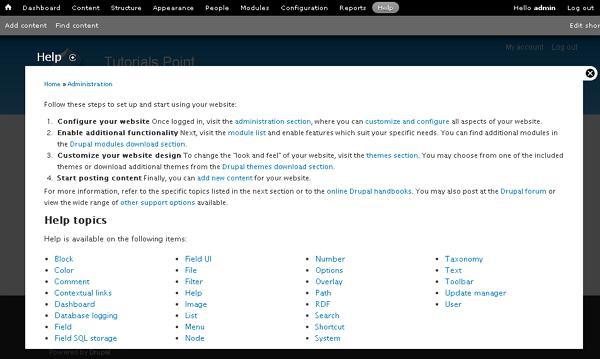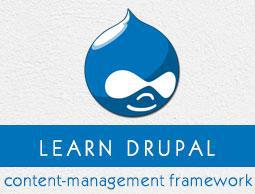Drupal - Menu Management
In this chapter, we will study about Menu Management in Drupal. Menu Management is the important part to navigate through Drupal admin page. Following is the screen for Drupal Menu Management.

Dashboard
It displays the list of articles or pages which are created. It is the first screen that will get displayed when you log into administration area.
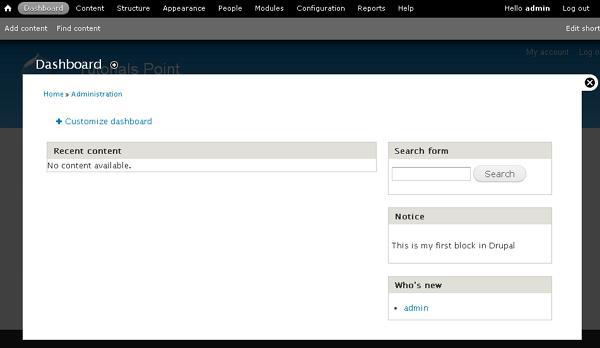
Content
This feature can help you in creating, managing and finding new pages. The table gets displayed with the detail of the articles, i.e. status, title, updated, author and operation (Edit and delete).
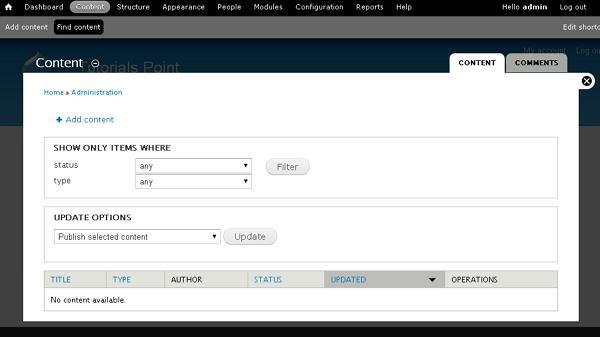
Structure
Structure includes the blocks, manage content types, add new menu links to the site and manage administrative tagging of content.
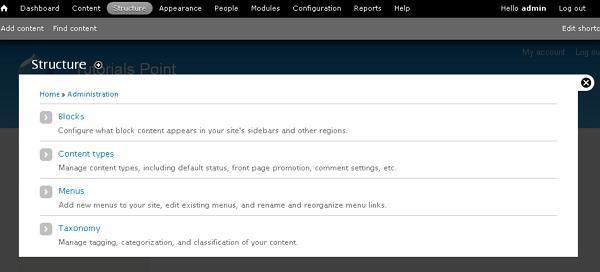
Block − Blocks are a container objects used to organize your content on your website. It can be displayed in the region on your page.
Content types − Content type defines the way the contents are collected and displayed.
Menus − Menus are used to set the URL links for your site.
Taxonomy − Taxonomy can be thought of classifying website content which display specific content based on taxonomy terms.
Appearance
A list of themes are displayed. You can install the theme, update the existing theme or switch the themes.
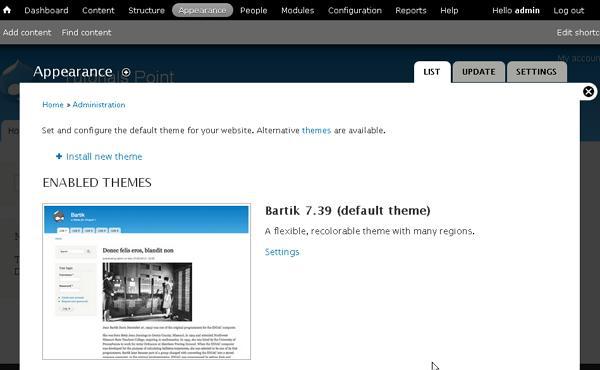
People
You can create a new user account or mange the existing user.
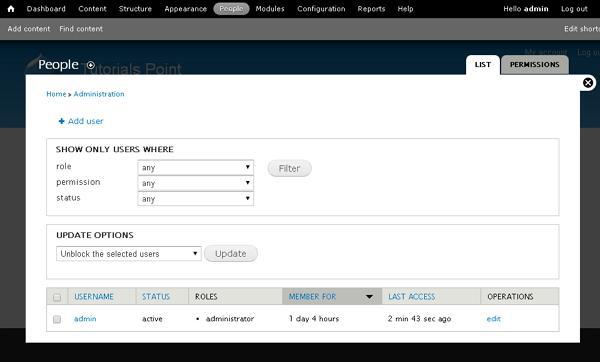
Modules
You can enable or disable the modules present in it or can install a new module.
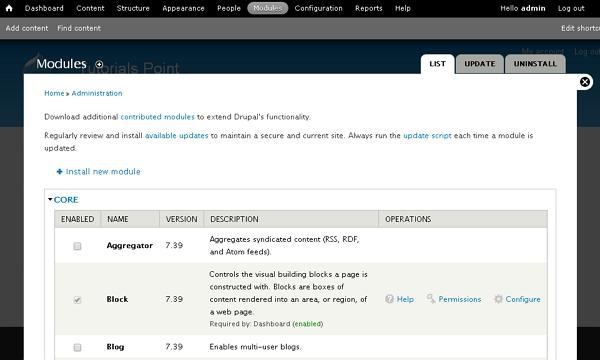
Configuration
This is an important part in the Drupal backend. Any changes done in this configuration, will affect the entire website. You can do the user account setting, site information setting or any other general site setting.
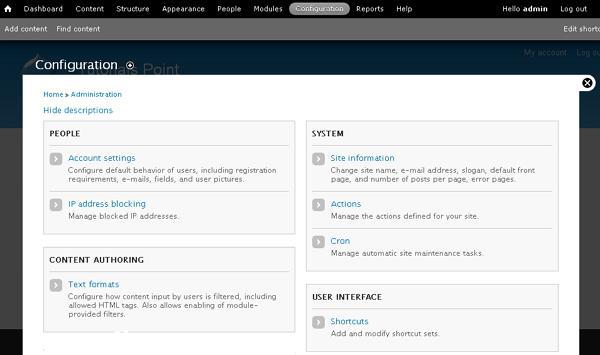
Following are the details of the fields present in the preceding screen.
People − Manages the user settings and IP address setting.
System − Manages the basic site information, advanced actions and site maintenance task.
Content Authoring − Manages the content input by the users including HTML tags.
User Interface − Sets the shortcut for menu on the admin account page.
Media − Manages the media settings in Drupal sites.
Development − Manages the errors and page caching for users.
Search and Meta Data − Set the alternative URL for specific page and the search engine maintains an index of words found in site content.
Web Services − Displays the RSS feed from your site.
Regional and Language − Sets the website time zone and displays the date and time.
Reports
It displays the information of available updates, recent log messages, and site security.
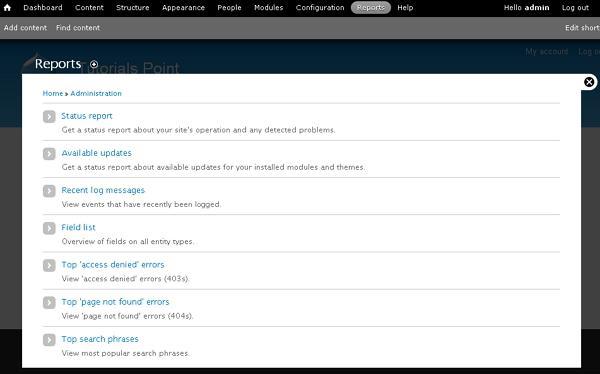
Following are the details of the fields present in the preceding screen.
Status report − Creates your Drupal site status report.
Available updates − Gives status update for you available installed modules and themes.
Recent log messages − Displays messages which are recently logged.
Field List − Displays the list of fields configured on your site.
Top 'access denied' errors − Displays access denied error message when user tries to access the unauthorized page.
Top 'Page not found' errors − Displays an error message as Page not found when there is no specified URL present in the Drupal site.
Top search phrases − Displays the most searched phrases on your Drupal site.
Help
It displays the help screen, where documentation pages of online modules are listed.
